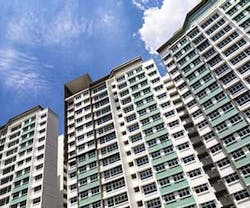3 Tips for Tenant Energy Efficiency
The nature of multifamily buildings means that behavioral change must be a cornerstone of energy efficiency efforts. Without this critical component, it can be tough to ensure savings – managers incur much of the cost and reap few monetary benefits, while tenants may not see the value of a whole-building improvement and can resent being asked to pay for any share of a project that doesn’t benefit them.
A recent pilot program covering 13 multifamily buildings in Takoma Park, MD, attacked this problem by testing a suite of behavioral change interventions, including messaging, events, educational information, and distributing energy-saving devices. The pilot’s sponsor, the American Council for an Energy Efficient Economy (ACEEE), notes that while the program did not achieve the intended level of savings, it yielded valuable insights for future community energy efficiency efforts, some of which are now fueling the Takoma Park Neighborhood Energy Challenge.
If the multifamily buildings in your portfolio need an efficiency boost, these ideas could revitalize your energy effort.
1) Tailor Engagement to Your Tenants
The ACEEE team held two events and organized an online venue to encourage friendly energy efficiency competition between neighbors. However, event turnout and engagement quickly became the biggest challenge as residents did not attend most of the events. They also didn’t participate in the building-wide energy challenge, which used the online platform Cool Choices to award points for turning off lights, powering down devices or making other energy-saving decisions.
“We suspect that tenants’ time constraints played a role in this low turnout,” the ACEEE team writes. “We held the events on weekday evenings starting at 6 p.m. Many residents of the participating buildings were likely unable to attend due to work or household constraints. At 6 p.m., residents may have been still working or commuting home, which could have hindered attendance.”
In response to the low turnout at their first of three events, a themed back-to-school gathering, the program team decided to distribute power strips and efficient LED lightbulbs door to door, which allowed them to interact with about one-third of the participants. “Several residents asked for tips on installing and using the new bulbs and power strips or inquired about where they could purchase more,” ACEEE notes. “By the time the holiday light exchange rolled around, many residents were familiar with the program and team.”
2) Offer Tangible Items
A holiday light exchange in which participants could swap old, inefficient holiday lights for new, more efficient ones had the best attendance. ACEEE attributes this to three factors:
- Holding the event at a convenient location (each building’s common area rather than the community center)
- Choosing a day and time when more residents would be available (the exchanges were conducted on weekends), and
- Giving away tangible, clearly useful items (the back-to-school and Halloween themed events did not offer giveaways).
“Several residents from each building appeared at the specified time, and several others stopped by our table on their way in or out of the building,” ACEEE notes. “The holiday light exchange not only gave us the opportunity to swap inefficient for efficient lights, but also allowed us to again explain the purpose of our program and disseminate more energy-saving tips.”
3) Include Diverse Interventions
Language barriers were particularly challenging during the pilot program, as many tenants spoke Spanish or Amharic as their first language rather than English. The game materials and event fliers were presented in all three languages to account for this, but the themes of the events may have not translated well, the organizers note. Back-to-school and “vampire power” (used for the Halloween-themed plug load event) may not convey the same meaning in other languages.
“We also learned that many of the residents did not celebrate Christmas or own holiday lights, which may account for less participation in the holiday light exchange,” ACEEE says. “For future programs, a wider diversity of interventions should be utilized – for example, participation would have likely been greater if there were an option to trade normal lightbulbs for more efficient alternatives. The themes may also have hindered participation, as not all tenants had children going to school and not all tenants celebrate Halloween.”
